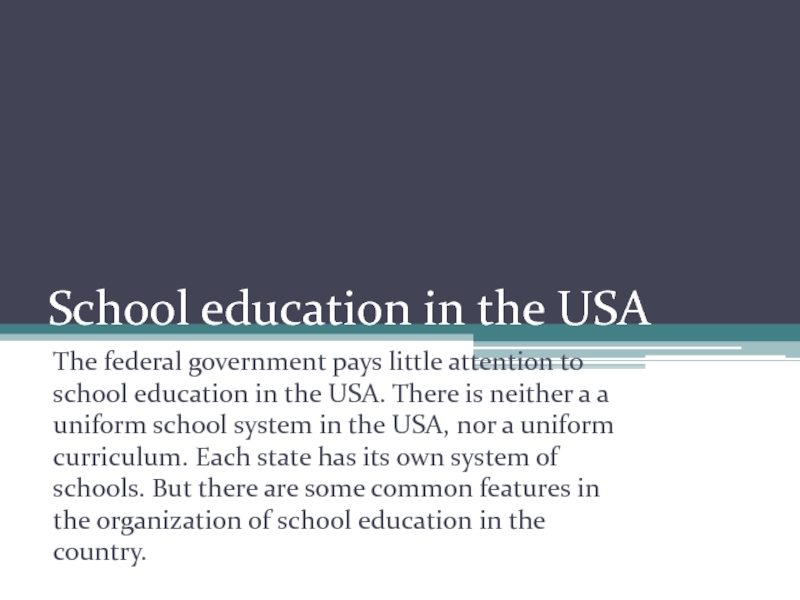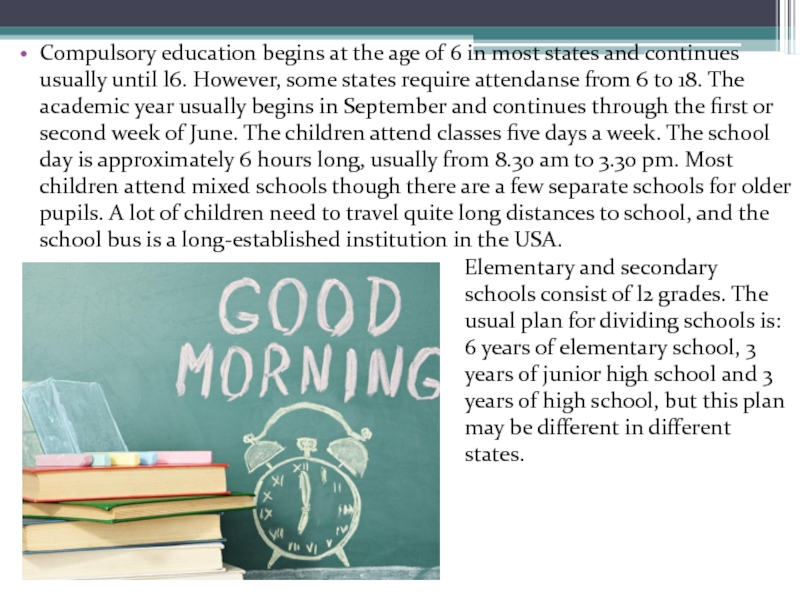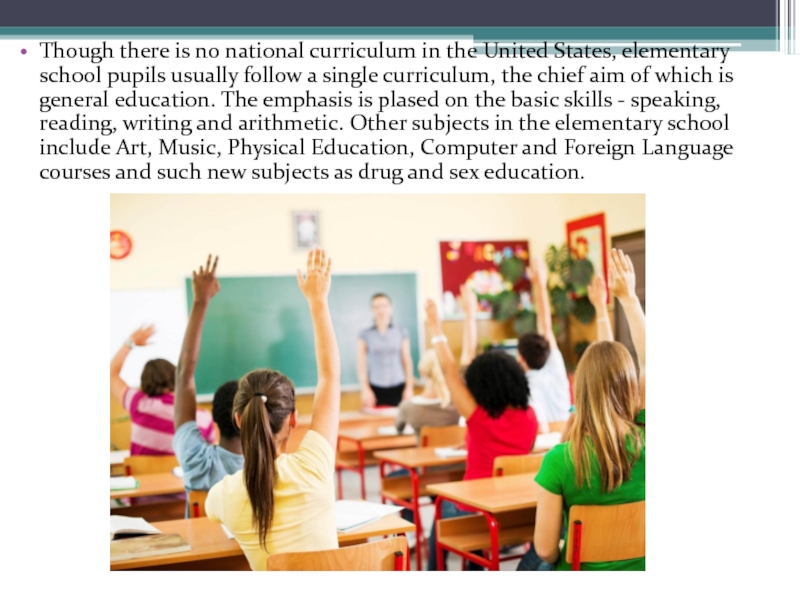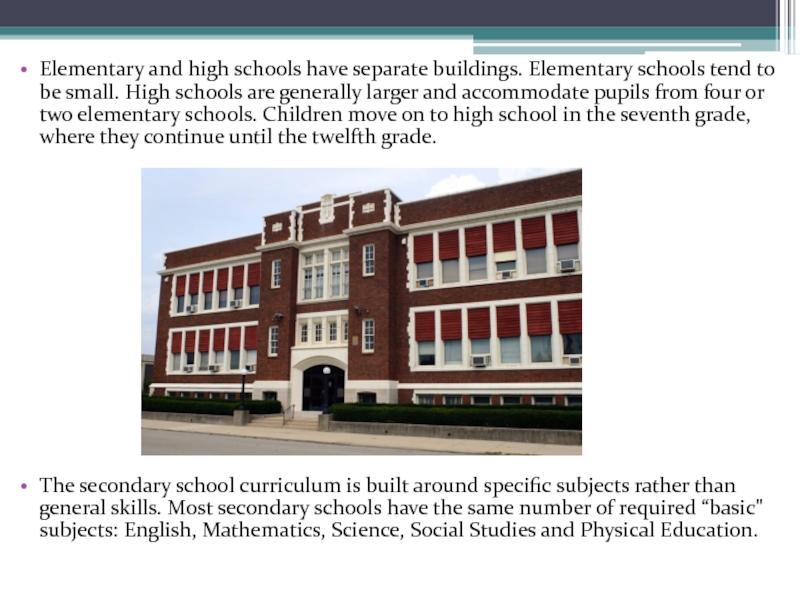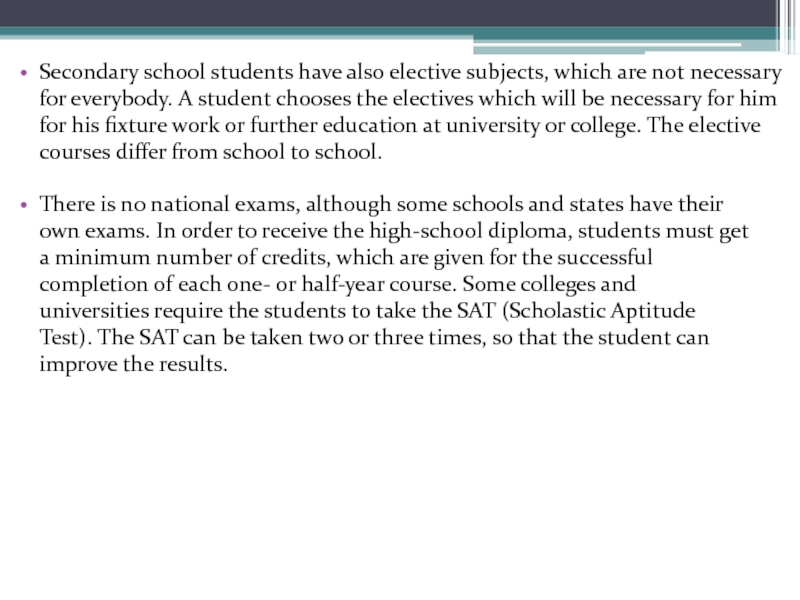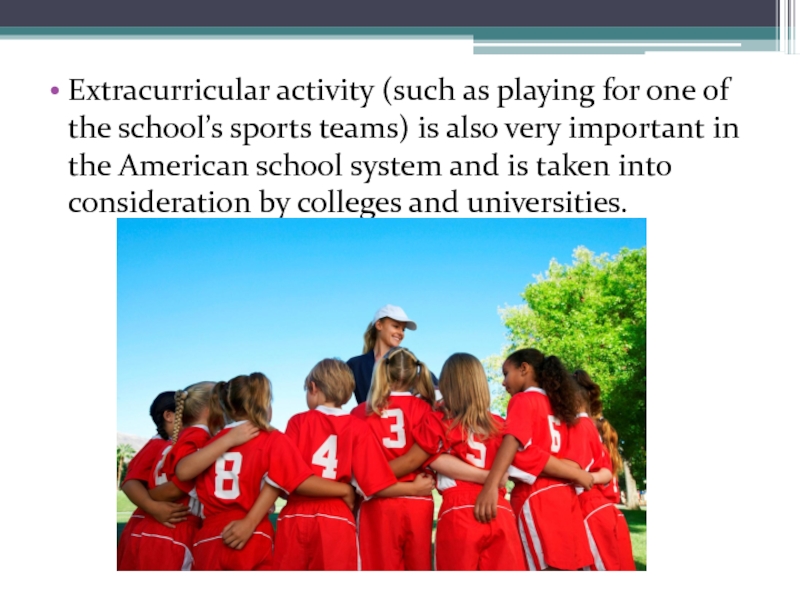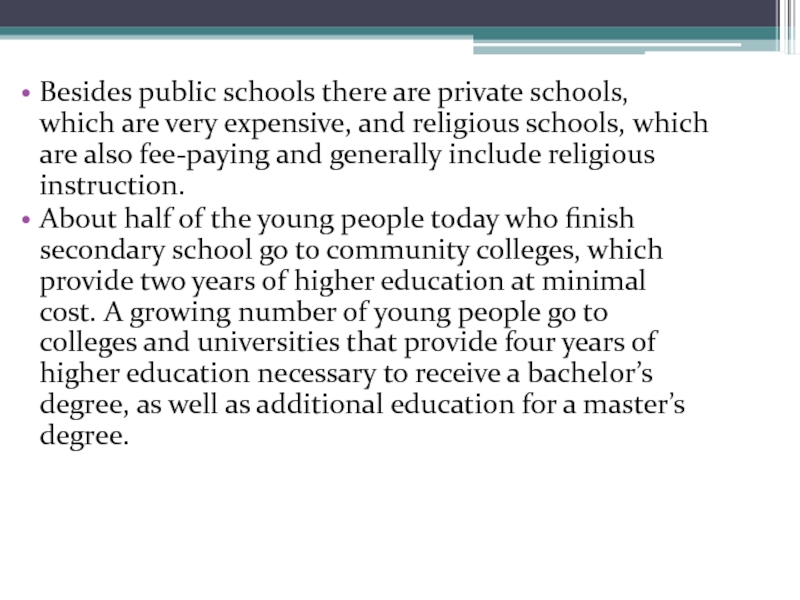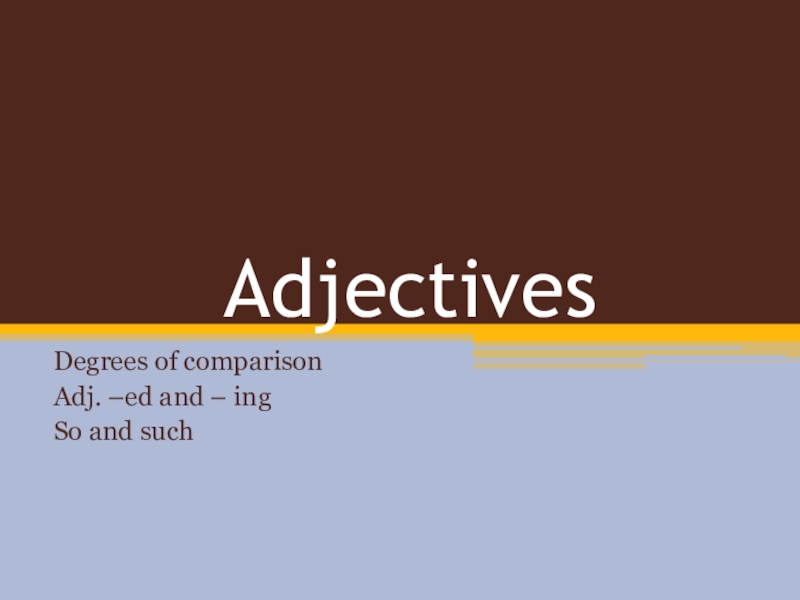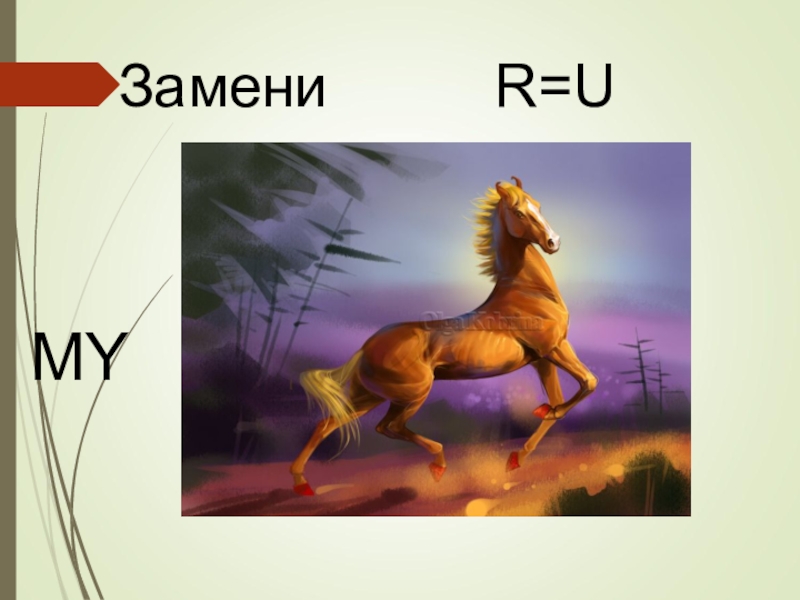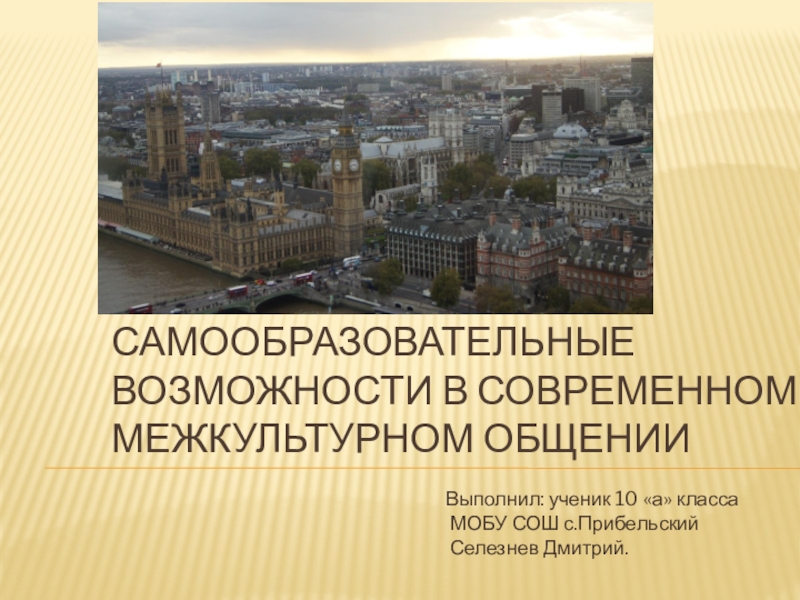- Главная
- Разное
- Образование
- Спорт
- Естествознание
- Природоведение
- Религиоведение
- Французский язык
- Черчение
- Английский язык
- Астрономия
- Алгебра
- Биология
- География
- Геометрия
- Детские презентации
- Информатика
- История
- Литература
- Математика
- Музыка
- МХК
- Немецкий язык
- ОБЖ
- Обществознание
- Окружающий мир
- Педагогика
- Русский язык
- Технология
- Физика
- Философия
- Химия
- Шаблоны, фоны, картинки для презентаций
- Экология
- Экономика
Презентация, доклад Образование в Америке
Содержание
- 1. Презентация Образование в Америке
- 2. Compulsory education begins at the age of
- 3. Though there is no national curriculum in
- 4. Elementary and high schools have separate buildings.
- 5. Secondary school students have also elective subjects,
- 6. Extracurricular activity (such as playing for one
- 7. Besides public schools there are private schools,
Слайд 1School education in the USA
The federal government pays little attention to
Слайд 2
Compulsory education begins at the age of 6 in most states
Elementary and secondary schools consist of l2 grades. The usual plan for dividing schools is: 6 years of elementary school, 3 years of junior high school and 3 years of high school, but this plan may be different in different states.
Слайд 3
Though there is no national curriculum in the United States, elementary
Слайд 4
Elementary and high schools have separate buildings. Elementary schools tend to
The secondary school curriculum is built around specific subjects rather than general skills. Most secondary schools have the same number of required “basic" subjects: English, Mathematics, Science, Social Studies and Physical Education.
Слайд 5
Secondary school students have also elective subjects, which are not necessary for
There is no national exams, although some schools and states have their own exams. In order to receive the high-school diploma, students must get a minimum number of credits, which are given for the successful completion of each one- or half-year course. Some colleges and universities require the students to take the SAT (Scholastic Aptitude Test). The SAT can be taken two or three times, so that the student can improve the results.
Слайд 6
Extracurricular activity (such as playing for one of the school’s sports
Слайд 7
Besides public schools there are private schools, which are very expensive,
About half of the young people today who finish secondary school go to community colleges, which provide two years of higher education at minimal cost. A growing number of young people go to colleges and universities that provide four years of higher education necessary to receive a bachelor’s degree, as well as additional education for a master’s degree.
